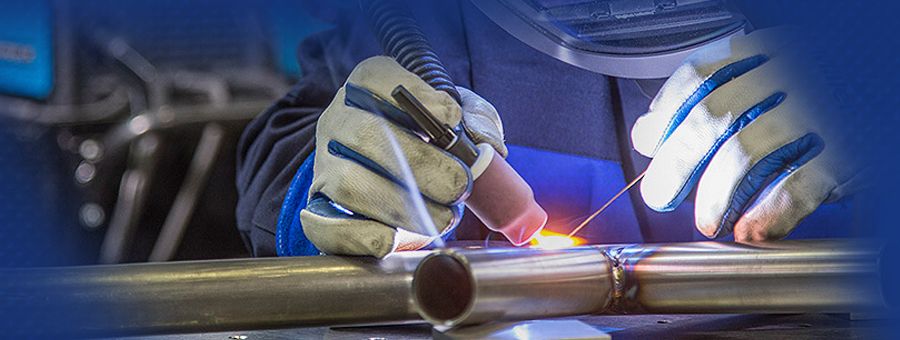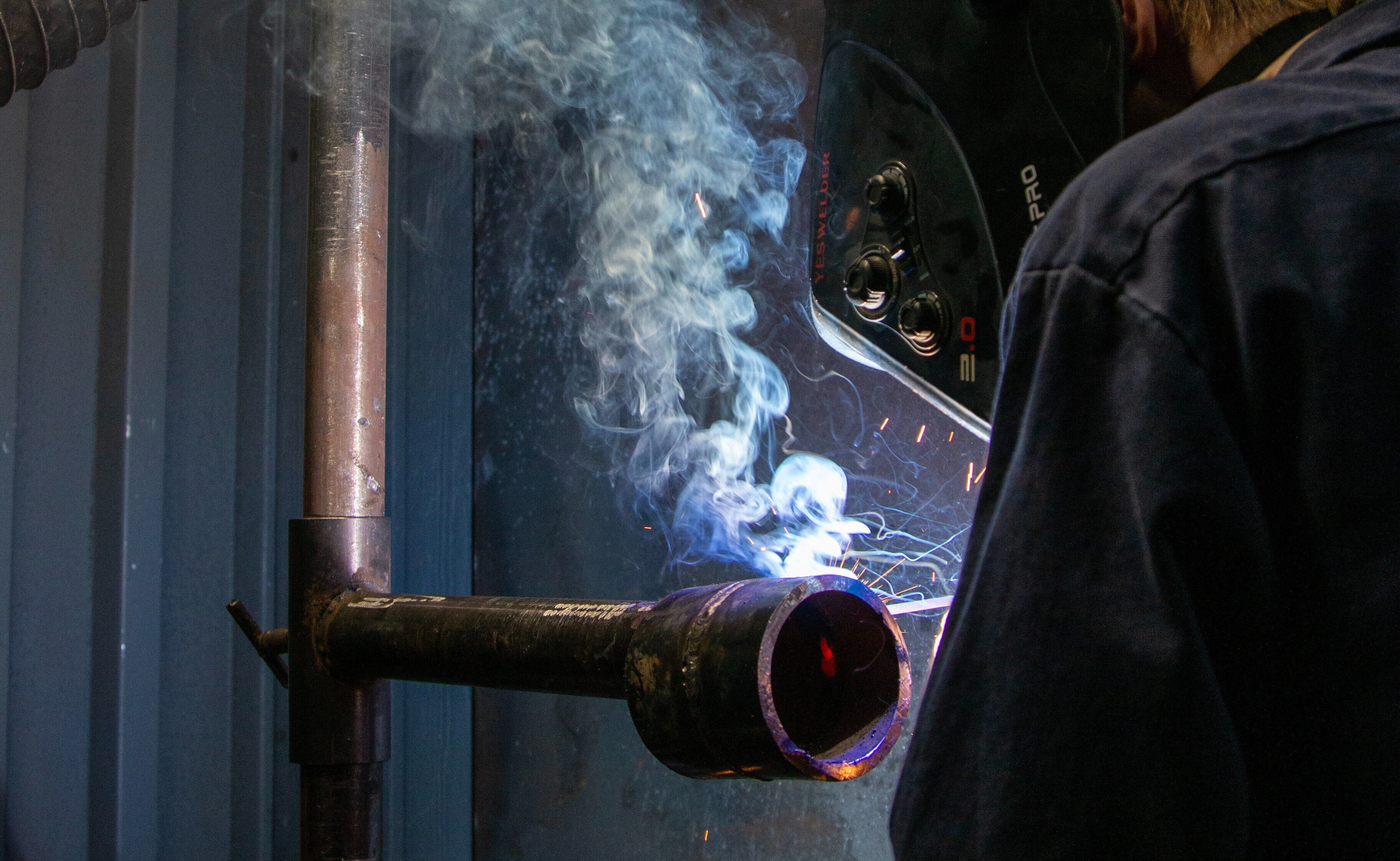All About Welding: Trick Insights Into Techniques and Ideal Practices for Success
Welding includes a selection of strategies, each fit for particular materials and applications. Recognizing these techniques, such as GMAW, SMAW, and TIG, is vital for accomplishing optimal results. The ideal devices and security techniques can not be neglected. As prep work and repairing play critical functions in the welding process, understanding these aspects can substantially boost the quality of the final item. What are the key elements that guarantee an effective weld?
Understanding Various Welding Techniques
Welding methods include a range of approaches, each matched to certain applications and products. Among the most usual methods are Gas Steel Arc Welding (GMAW), Secured Steel Arc Welding (SMAW), and Tungsten Inert Gas Welding (TIG) GMAW, likewise called MIG welding, is prominent for its rate and flexibility, making it optimal for slim materials. SMAW, or stick welding, is preferred for its simpleness and performance in outside atmospheres, especially with thicker metals. TIG welding provides precision and control, making it ideal for elaborate job and non-ferrous steels (Belgrade Fabrication). Each strategy has its one-of-a-kind benefits and factors to consider, enabling welders to choose the very best approach based on the job's demands, material type, and desired end results. Recognizing these strategies is essential for successful welding
Important Welding Tools and Devices
While numerous welding strategies need specific abilities, the appropriate devices and devices are similarly necessary for attaining quality outcomes. Crucial welding tools consists of welding makers, which differ depending upon the method-- such as MIG, TIG, or stick welding. Protective equipment, consisting of aprons, headgears, and gloves, assurances security and convenience throughout the procedure. Furthermore, fixtures and clamps help secure products in place, guaranteeing precision in welds. Consumables like welding rods, wire, and shielding gas are also vital elements that affect the quality of the weld. Devices such as cutters and mills promote surface area prep work and post-weld finishing, contributing to an expert outcome. Buying high-quality devices inevitably boosts the effectiveness and effectiveness of welding jobs.
Security Practices in Welding
Appropriate security practices are crucial in the welding sector to shield workers from potential dangers. Welders must put on suitable individual safety devices (PPE), including headgears with appropriate shading, handwear covers, and flame-resistant clothes. Sufficient air flow is vital to reduce exposure to harmful fumes and gases created during the welding procedure. Furthermore, employees ought to be learnt the right handling of welding devices to stop mishaps. Fire safety and security steps, such as keeping flammable materials far from the welding location and having fire extinguishers readily available, are required. Regular examinations of equipment and work areas can assist determine prospective dangers prior to they result in accidents. By sticking to these security practices, welders can produce a safer working atmosphere and minimize threats connected with their profession.
Readying Materials for Welding
Preparing materials for welding is an essential step that considerably affects the high quality and stability of the final product (Belgrade Fabrication). Correct preparation entails cleaning the surfaces to remove impurities such as dust, oil, and rust, which can jeopardize the weld. Methods such as grinding, sanding, or using solvents are generally employed to accomplish a clean surface. Furthermore, making certain that the materials fit together snugly is important; gaps can result in weak welds. It's also essential to think about the positioning and positioning of the elements, as this will influence the ease of welding and the last end result. Lastly, choosing the proper filler material and guaranteeing compatibility with the base metals is essential for attaining solid, long lasting welds
Tips for Getting High-Quality Welds
Attaining top quality welds needs attention to information and adherence to finest techniques throughout the welding process. Correct joint prep work is essential, guaranteeing surface areas are totally free and clean from contaminants. Choosing the proper filler material and welding strategy based on the base metals is vital for suitable bonding. Maintaining regular travel speed and angle while welding can promote and stop defects harmony. In addition, controlling warm input is necessary; too much heat can lead to warping and damaged joints. If needed, regularly examining the welds throughout the procedure allows for immediate adjustments. Using ideal post-weld therapies, such as cleansing and tension relief, can improve the resilience and honesty of the weld, ultimately making sure a successful outcome.
Troubleshooting Typical Welding Issues
Welding usually offers obstacles that can impact the top quality and integrity of the end product. Common issues such as porosity, inconsistent weld grains, and getting too hot can emerge, each requiring details repairing methods. Recognizing these issues is necessary for welders to boost their abilities and achieve suitable results.
Porosity Issues Discussed
Although porosity can often be ignored, it remains a vital problem in welding that can compromise the integrity of a completed item. Porosity describes the visibility of little gas pockets within the weld grain, which can deteriorate the joint and lead to premature failure. This the original source trouble typically arises from pollutants, moisture, or inappropriate securing gas insurance coverage during the welding process. To alleviate porosity, welders should confirm that the base products are clean and dry, utilize ideal securing gases, and preserve consistent welding specifications. Regularly checking the tools and setting can likewise aid identify possible concerns before they manifest in the weld. Dealing with porosity successfully is crucial for attaining solid, long lasting welds that meet quality requirements.

Irregular Weld Beads
Inconsistent weld beads can considerably affect the quality and toughness of a completed item. Different variables add to this issue, consisting of inappropriate traveling rate, incorrect amperage setups, and irregular electrode angles. When the welder relocates as well rapidly, a grain may appear narrow and lack penetration, while relocating too slowly can create too much build-up. In addition, making use of the wrong amperage can lead to either damaging or excessive spatter, both of which compromise weld stability. The welder's strategy, such as inconsistent lantern movement, can also bring about unequal grain look. To alleviate these troubles, welders must concentrate on preserving consistent, controlled activities and guaranteeing proper devices settings to accomplish harmony in their welds. Consistency is key to accomplishing solid and reputable welds.
Overheating and Bending Issues
Excessive warm during the welding procedure can cause considerable overheating and warping issues, affecting the architectural stability of the workpiece. These issues usually show up as distortion, which can jeopardize positioning and fit-up, making further setting up challenging. Aspects contributing to overheating consist of the selection of welding parameters, such as voltage and take a trip speed, in addition to the kind of product being welded. To minimize these problems, welders need to keep consistent traveling speed and ideal warmth input while monitoring the work surface temperature level. In addition, preheating or post-weld warm airco welder treatment can assist relieve stresses triggered by quick cooling - Montana Mobile Welding and Repair Fabrication. Regular examination and adherence to finest techniques are crucial in preventing getting too hot and making sure the long life and integrity of bonded frameworks
Often Asked Questions
What Are the Career Opportunities in the Welding Sector?
The welding sector offers diverse occupation possibilities, including settings as welders, educators, examiners, and designers. Specialists can work in production, construction, aerospace, and vehicle sectors, taking advantage of strong demand and competitive salaries in numerous roles.
How Can I Enhance My Welding Speed Without Giving Up Quality?
To enhance welding speed without sacrificing high quality, one should practice reliable techniques, keep equipment, enhance settings, and improve hand-eye control. Routine training and looking for comments can additionally greatly add to achieving faster, top quality welds.
What Accreditations Are Readily Available for Welders?
Many qualifications exist for welders, including those from the American Welding Culture (AWS), the National Center for Building And Construction Education and Research (NCCER), and numerous industry-specific organizations. These qualifications boost employability and demonstrate ability proficiency.
Exactly How Does Welding Affect the Properties of Metals?
Welding affects the residential properties of steels by changing their microstructure, which can result in adjustments in hardness, toughness, and ductility. Warmth input and air conditioning rates during the procedure significantly impact these product qualities.
Can I Bonded Dissimilar Metals Together?
